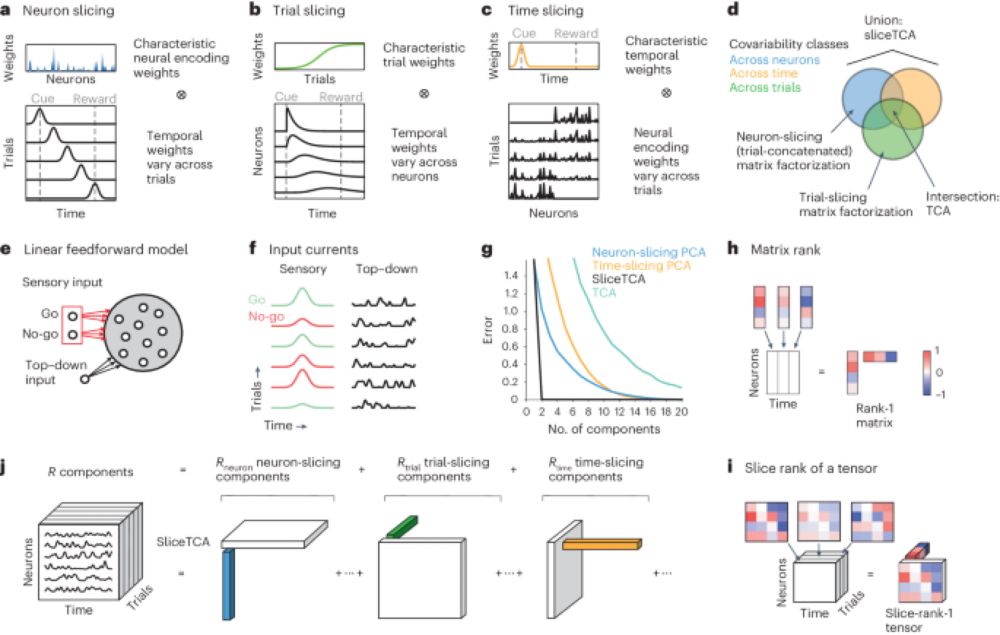
Last week, Aaron Earle-Richardson (Research Tech) presented Arthur Pellegrino and colleague’s new paper on Dimensionality reduction beyond neural subspaces with slice tensor component analysis. This 🧵 explores his thoughts (🤍 & ❔) www.nature.com/articles/s41...

Neural activity does not always lie in a low-dimensional subspace. The authors extend this classic view to show that task-relevant information is distributed across multiple covariability classes and ...
Thank you to the authors at the University of Edinburgh for your work, and we look forward to following its progress! cc: Arthur Pellegrino, Heike Stein, N. Alex Cayco-Gajic
❔3️⃣: Why does non-negativity, which restricts the possible solution space, invalidate your method of hierarchical optimization? Why might factor rotation mitigate this issue as you mentioned?
❔2️⃣: Why does non-negativity, which restricts the possible solution space, invalidate your method of hierarchical optimization? Why might factor rotation mitigate this issue as you mentioned?
❔1️⃣: How do you measure the orthogonality between slicing components of different classes in your L3 optimization? (for example, between a neural slice of trial X time and a time slice of neurons X trials).
🤍3️⃣: By restricting the possible classes of variability, you can use sliceTCA to denoise data by making assumptions about the sources of relevant variance in the data (e.g. in behavior over trials vs. across neurons).
🤍2️⃣: Choosing the number of components using the L3 loss, optimized for, but not totally restricted by orthogonality, better reflects the ‘ground truth’ components of a natural process as they are not always 100% orthogonal.
🤍1️⃣: Clipping the edges of the test trials to reduce penalization for temporal variability is an effective solution to prevent the common problem of overfitting of the temporal components.
